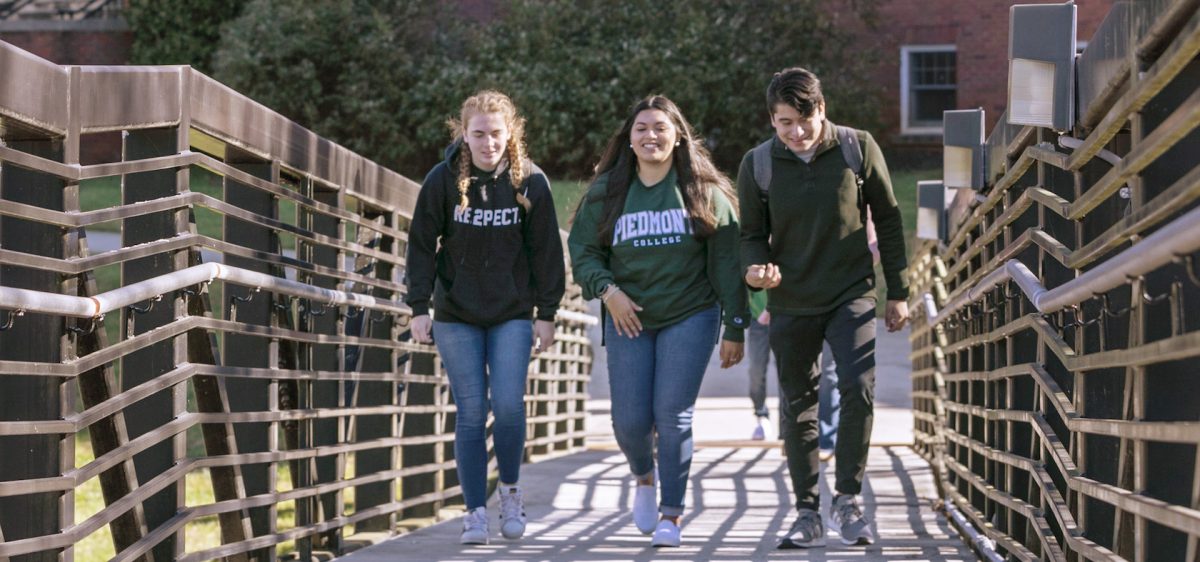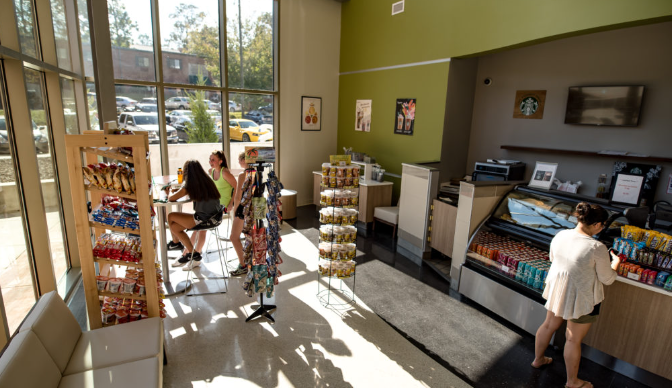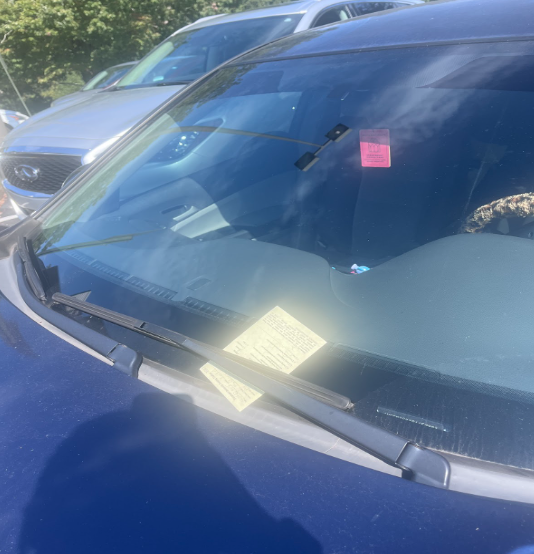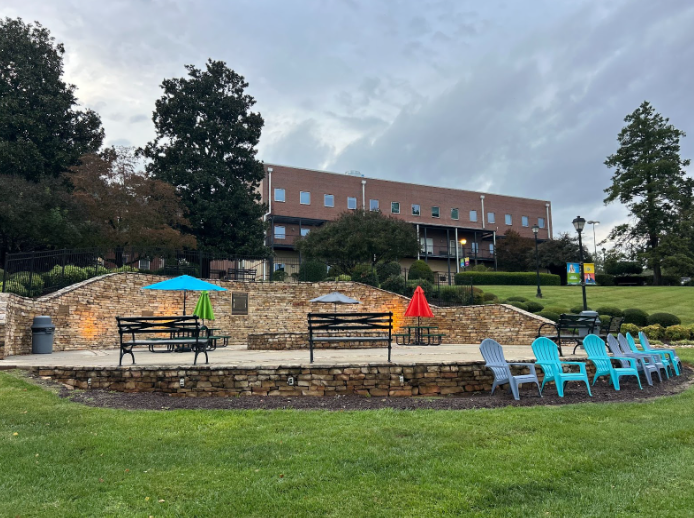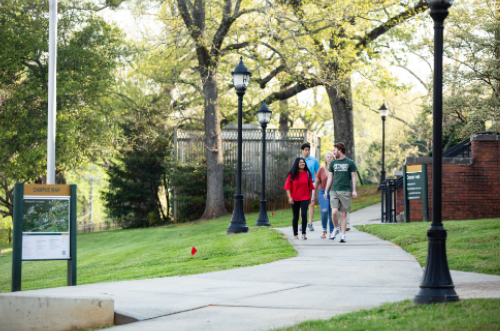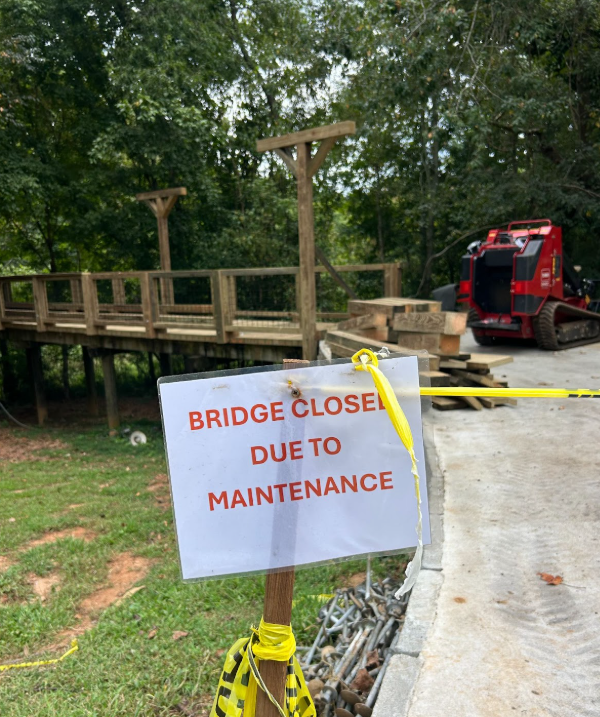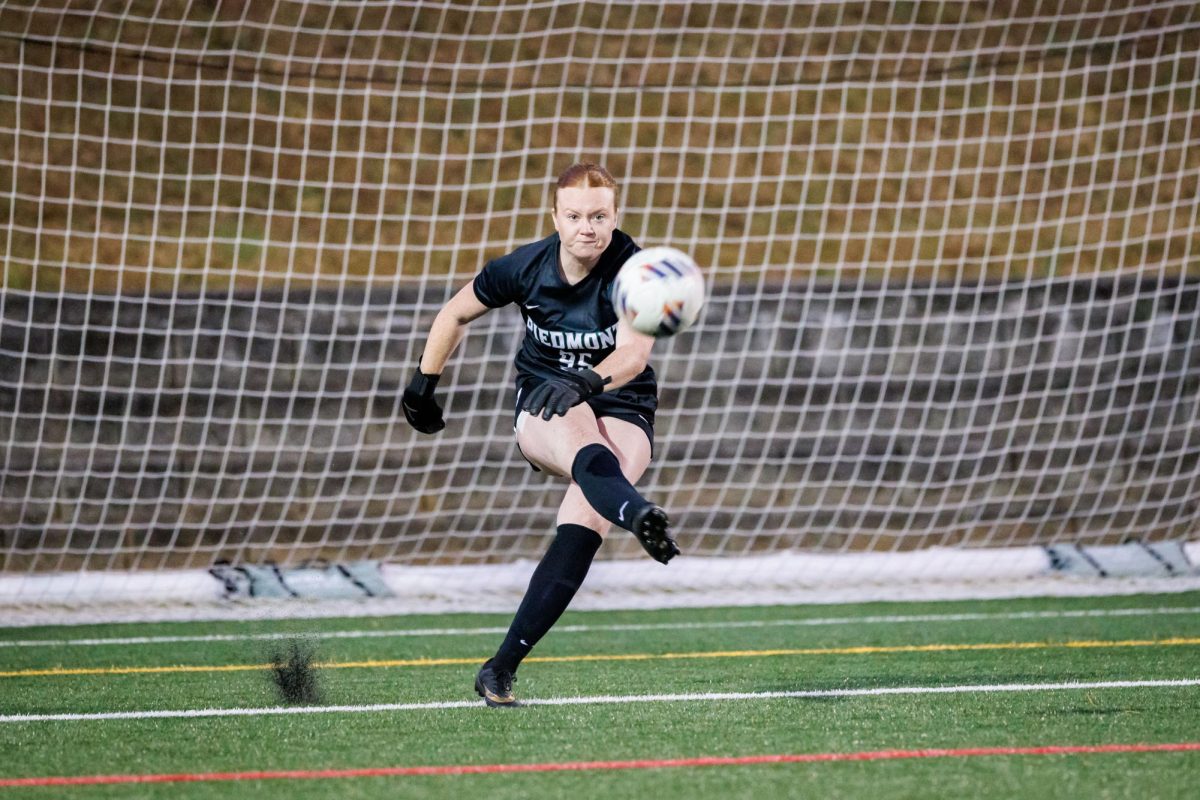With a smaller-than-expected freshman class in fall 2024, Piedmont enacted campus-wide budget cuts that impacted all areas of the campus. Furthermore, President Donald Trump’s well-publicized cuts to education and diversity initiatives have educational institutions around the country questioning the future of higher education funding from the government.
This has led many Piedmont students to wonder, “Where do we go from here?”
Enrollment
According to Parchment.com, Piedmont University had a total of 1,239 undergraduate students and 874 graduate students enrolled in 2015. As of 2022, Piedmont had 1,261 undergraduate students and 607 graduate students enrolled according to usnews.com.
Over the course of seven years, undergraduate enrollment has remained steady while graduate programs have seen a drop in enrollment. During this time, Piedmont has added multiple graduate programs to bring in students to drive enrollment numbers back up to what they once were.
“The academic programs with highest enrollments for spring are graduate education, elementary education, nursing, business and forensic science,” said Melissa Fortner from Piedmont’s Registrar office.
Although in recent years FAFSA prompted a setback for many incoming students, Piedmont does not anticipate this setback for the 2026 school year. The university hopes that students who may have considered attending Piedmont in the past but were unable to attend due to a lack of financial aid will reconsider attending Piedmont in upcoming years.
The university has strong enrollment numbers in programs such as business administration, with 190 students in the program, and nursing just behind with 180 students. As Piedmont continues to promote guaranteed placement after graduation for their nursing and education programs, the university can expect an influx of prospective students in those departments.
The Walker College of Business and the College of Education, commonly thought of as the most popular majors on campus, surprisingly only make up for 30% of all undergraduate students.
“In addition to business and education, which are staples, we are seeing growth in professional programs – athletic training, speech language pathology, professional counseling, school counseling, criminal justice, nursing, forensic science, biology and psychology,” said Fortner.
All programs Fortner listed as growing professional programs fall under either the College of Nursing & Health Sciences or the College of Arts & Sciences, which, when combined, make up for 70% of all declared undergraduate students.
As many courses in the College of Education, a “stable” major, have shifted to strictly online education, it is no surprise that students fear the risk of discontinued courses.
“Sure, we can read PowerPoints and watch videos online, but doing things like interview practice and learning hands-on with recording equipment is essential before we go out and do it on our own,” said sophomore sports and mass communications major Colin Hackshaw. “Losing even one writing class or one audio class would take away from our learning experience tremendously.”
When asked via email how students can prepare for the potential shift in landscape of majors and what is to expect in the upcoming years for the current catalog, Piedmont’s Registrar did not answer.
As transfer rates increased nationally by 4.4% from 2023 to 2024, Piedmont felt the effects in the same time frame, with its retention rate after a new student’s first year fell from 77% to 70%. National transfer rates are only expected to increase, and although Piedmont’s retention rates have the potential to continue to fall, the university has the potential to see an influx of second- and third-year students. Nearby institutions such as Birmingham Southern College and Limestone University have already closed their doors, resulting in students being forced to relocate.
Both institutions’ top declared undergraduate major is business administration, providing a potential opportunity for Piedmont to see an influx of transfer students.
According to College Board in 2025, Piedmont’s graduation rate sits at roughly 48%. In the upcoming years, the university has set a goal to increase the graduation rate annually with a target set to “meet or exceed the 6-year graduation rate for private colleges in Georgia,” which sat at 60.9% in 2022 according to Higher Ed Data Stories. A roughly 12% increase is needed to reach this goal, and based on previous cohort information from 2014-2017, such a drastic increase is unlikely to occur.
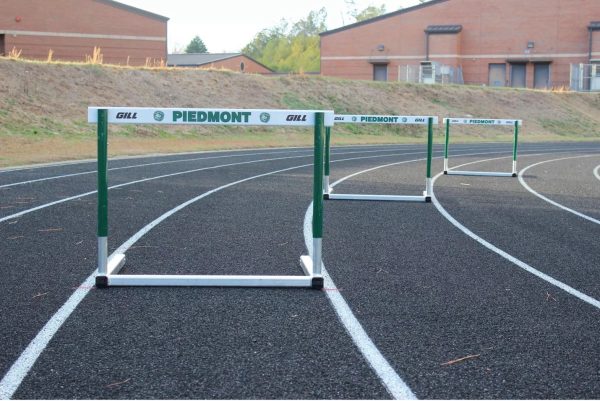
Athletics
As students have felt Piedmont’s budget cuts through canceled classes, a cut in student worker hours, and a lack of equipment resources, the athletic department’s budget cuts have been most prominent to many students.
According to usnews.com, with 1,261 undergraduate students in the 2023 school year, the athlete population on campus makes up more than 41% of undergraduates, with 511 student-athletes wearing a Lions uniform.
“I think where we’re at with the 22 programs that we have, there are some things that we need to have that would enhance our whole department and the student-athletes that are part of those 22 programs,” said athletic director Jim Peeples.
In the fall, the athletic department cut three staff members, allowing the university to continue to fund the 22 athletic programs.
For the future of Piedmont athletics, Peeples wants to add more facilities to the Piedmont campus, specifically a track and field facility, and a strength and conditioning center for athletes.
Although funding for these facilities is up in the air, fundraising is possible.
“I think we can raise the money for it,” said Peeples. “I think people will see the need, and I think they can have big impacts. So, for me, those are the two biggest things that I think ultimately impact every student athlete in all 22 programs in a positive way.”
According to Sports Facilities Companies, sports facilities are not only an incentive for prospective student athletes, but they also open up the possibility to host events.
Hosting events would answer other future questions for the university, revenue generation.
According to a study conducted by the NCAA, Division III institutions without football, like Piedmont University, generated $468,858 in revenue minus expenses. This poses a big question for the athletic department.
One revenue stream that has been suggested is charging admission to Piedmont athletic events. But for Peeples, that’s not an option. Peeples said he has no intention of making students and parents pay for admission, noting that students and parents pay tuition for the university and should not have to pay to see athletic events on campus.
Although there is no clear answer to the budget crisis in the athletic department, a study from MIT show that fundraising is the foundation of a successful Division III athletic department.
Most of these donors come from alumni, parents and boosters. As Piedmont continues to face financial issues, the future of athletics relies heavily on maintaining and providing students with a lasting impact on both their education and time as a student athlete.
“What I would say to future potential Lions is [to] look at that long-term impact that you’ll have for the rest of your life,” said Peeples.
For more information on DIII athletics and the revenue comparison see ncaa.org facts and figures.
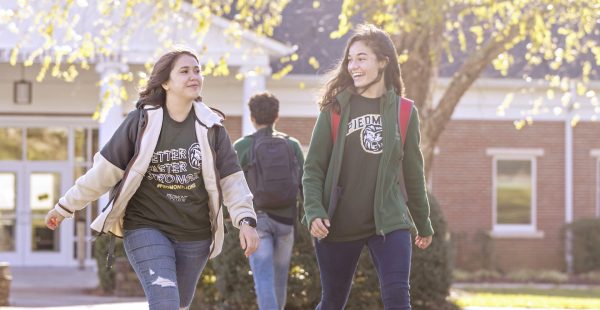
Financial Aid and Admissions
Universities and colleges are having a difficult time retaining their students. Nicknamed the “admissions cliff,” this drop in registration is cited as a consequence of the 2007 financial crisis. Due to the drop in income and child rearing that resulted from the crisis, there has been a similar drop in high school graduates seeking a college degree.
Not just related to Piedmont, universities nationwide have encountered a 5% drop in freshmen and a 6% drop in 18-year-olds. Since March 2020, over 40 colleges have closed or notified their students and staff of closures. An estimated 46,130 students have been affected by non-profit college closures. Private non-profit colleges, like Piedmont, are most likely to be affected by this trend.
“I think finances play a large part in that as well. [A college degree] is just not providing the benefit it seems to have previously provided,” said freshman August Gotter. “A good number of my friends have said ‘If I already know what I want to do, why not just get in the workforce and learn hands-on, rather than spending a bunch of time getting a degree that will put me in debt?’”
Piedmont is not immune to the “admissions cliff.” According to a February article in The Roar, Piedmont saw a 15% decrease in anticipated enrollment in their undergraduate and graduate programs going into the 2024-2025 school year. 6% more than the national average of a 9% decrease. FAFSA changed their application process, and Criser cited this as a deterrent for students to apply.
Despite national trends, President Criser has maintained confidence in the university’s ability to attract students. https://piedmontroar.com/12952/news/piedmont-university-experiences-drastic-budget-cuts-what-does-president-criser-have-to-say/
“We retained 92% of our undergraduate students from last fall,” Criser wrote in an email sent to the faculty and staff. “Combined with increased enrollment of undergraduate and graduate students this spring, Piedmont University has responded to the challenges we faced from the delays in FAFSA filings last year.”

Diversity and Inclusion (DEI)
Piedmont University was always known as a PWI (predominantly white institution), but with the racial demographics changing every incoming year, people of other racial/ethnic backgrounds have increased by 26% since 2021, according to Data USA. Despite the number of white students being 68%, Piedmont has made strides to be inclusive of everyone, regardless of their racial background. In recent years, Piedmont University formed an all-African American union group named ‘United in Power,’ and formed a Latino/Latina based organization titled ‘Student Organization of Latinos.’ The University has also made the effort to host LGBTQ+ events such as a Pride Walk to recognize Pride month.
Piedmont University has celebrated many diversities throughout the years to ensure that all students and staff felt included at the school. These celebrations and actions included Black History Month activities, Spanish holidays, and women’s studies classes.
But with President Trump’s very public desire to eliminate DEI initiatives in higher education, some students expressed concern over how that might impact their Piedmont experience.
Senior art major Jameson Listermann is an openly transgendered student who is graduating this spring. “I hope Piedmont never makes a student feel judged based on their background, as how Piedmont is currently,” Listermann said. “The professors ask students their preferred name, pronouns and have been nothing but welcoming in my experience. I hope this doesn’t change.”
On March 4, 2025, Piedmont University emailed students and their families mentioning the DOE (Department of Education) addressing Trump’s orders to eliminate DEI policies. The vaguely-worded email did not allude specifically to DEI policies, rather outlining a letter colleges received from the Department of Education regarding its new interpretation of the Civil Rights Act of 1964.
“The letter indicated that broad federal funding was at risk if the Department determined that universities were not compliant with new interpretations of civil rights laws and existing university policies regarding racial components,” wrote President Criser in the email. Criser listed admissions, hiring, financial aid, scholarships, prizes, administrative support, discipline, housing, and graduation ceremonies as areas of focus.
“Piedmont is assessing our compliance with the federal directive and will be making the changes deemed necessary. While some changes and adjustments will be required, our students, faculty and staff will remain our top priority as we work together through any necessary changes.”
Professor Sandra Maughon, professor of business and director of grants and sponsored research at Piedmont University, believes Piedmont will continue to support students in all possible ways.
“Piedmont is very focused on the students; we want to make the success pathway for students as easy and straightforward as possible,” she said. “It doesn’t matter if it is DEI or anything, we want to give each student individual support. It doesn’t matter if you look the same or don’t look the same, you are important.”
Dr. Joe Dennis, associate professor of mass communications at Piedmont and former diversity director at the University of Georgia’s Grady College, said that higher education started developing DEI initiatives in the 1990s to meet the demands of its changing student body.
“The population of America, and Georgia more specifically, is increasingly becoming more diverse,” he said. “It wasn’t that long ago — the generation before mine — when black people weren’t even allowed to attend many institutions in the South. Colleges had to pivot to reach a new generation of students.”
According to the Georgia Budget and Policy Institute, in 2020, minorities comprised 45% of Georgia’s population. In 2050, nonwhite people are projected to make up 55% of the population. This impacts college admissions, Dennis said.
According to Inside Higher Education, the number of white high school graduates is expected to decrease by 26% by 2041, Hispanic graduates are expected to increase by 16%, and multiracial students are expected to increase by 68%.
“Regardless of what any President does (regarding trying to eliminate DEI initiatives), the facts are the facts,” Dennis said. “We are becoming a more diverse nation, and a more diverse state.”
Dennis doubts that Piedmont’s ability to attract students will be directly impacted by federal initiatives, but he does have a larger-scale concern about scaling back DEI initiatives. “As I said earlier, in my parents’ generation, some members of the population weren’t allowed to attend college. So many didn’t go to college. When they had their children, they did not know how the college application process worked or the value of a college education. So, their kids didn’t go to college. And so on.”
“Many of the diversity initiatives enacted were done to break this cycle — to support first-generation students who may not have the family knowledge of higher education and what it entails.”
Dennis said many DEI initiatives were enacted as a “business decision, rather than some high moral calling or desire for wokeness.”
“It’s the same reason Coca-Cola, Wal-Mart, or any brand develops ad campaigns targeting specific demographics. “It’s about attracting new consumers unaware of your product. And if higher education stops attracting minorities, then according to population trends, many will go out of business.”


